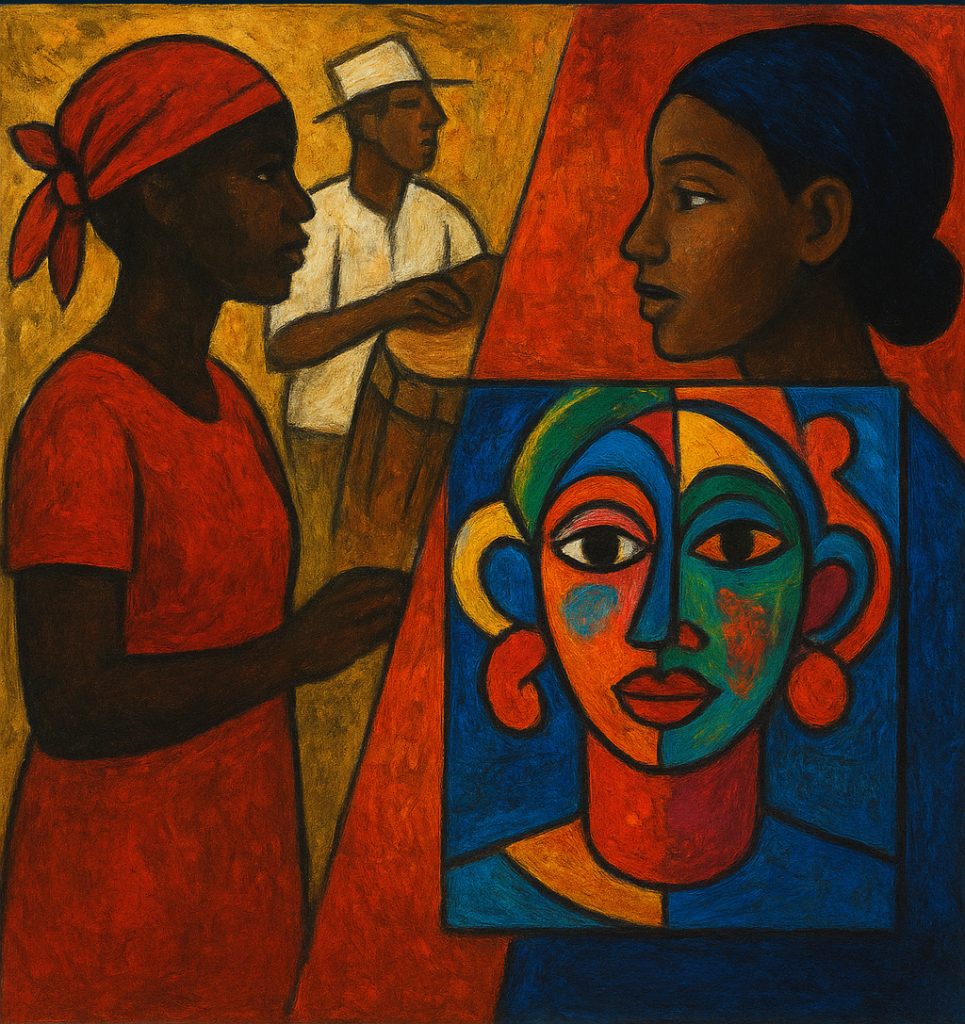Haitian Art Through the Centuries : Heritage and Modernity
Haitian art is a living heritage — a bridge between the past and the present. It tells a unique story: that of a people who have transformed their struggles and beliefs into works of exceptional power and beauty. From the mystical symbolism of Vodou to contemporary expressions, Haitian art is a constant dialogue between tradition and innovation.
Deep Roots : Vodou and Spirituality
The origins of Haitian art are deeply rooted in Vodou religion and African traditions. The first artists, often anonymous, were priests or initiates who created ritual objects.
Think of the shimmering embroidery of Vodou flags — sequined and beaded banners that depict the loa (spirits). These are not mere decorations; they are sacred works of art, filled with meaning and symbolism.
Within them appear geometric motifs and symbols known as vèvès, drawn on the ground to invoke the spirits. This aesthetic laid the foundation for Haitian art, infusing it with vibrant colors, complex storytelling, and a deep connection to the spiritual world.
The Revolution of Painting: The Cap-Haïtien School and Naïve Art
After World War II, Haitian art underwent a major transformation. It was during this time that centers like the Centre d’Art of Port-au-Prince emerged.
Artists such as Hector Hyppolite and Philomé Obin became internationally renowned, capturing the world’s attention.
They gave birth to what is often called Haitian naïve art, characterized by vivid colors, scenes of everyday life, and meticulous attention to detail. These painters, often self-taught, were not trained in European academies. They drew inspiration from their own surroundings — bustling markets, lush landscapes, and, of course, Vodou ceremonies.
Haitian naïve art proved that a work does not have to conform to Western standards to be universally recognized. It allowed Haitian artists to express themselves authentically and to share with the world an intimate vision of their culture.
Modernity: When Tradition Meets Innovation
Today, Haitian art goes far beyond naïve painting. Contemporary artists are pushing boundaries while remaining faithful to their heritage. They integrate new materials and techniques, exploring complex social and political themes.
Metal sculpture, for example, is a perfect illustration of this evolution. In Croix-des-Bouquets, artisans transform ordinary oil drums into intricate and magnificent works of art. Their pieces often depict scenes from nature or Vodou figures — yet they are created from discarded materials, an act of transformation that symbolizes Haitian resilience.
Contemporary artists such as Tiga (Jean-Claude Garoute) and Edouard Duval-Carrié have opened new paths. Through painting, sculpture, and installations, they explore subjects like diaspora, identity, and memory. Their works are often more abstract or conceptual, but the fundamental themes — spirituality, history, and struggle — remain ever-present.
These artists do not reject their past; they use it as a springboard. They show that Haitian art can renew itself without losing its soul. It is an art that honors its roots while embracing the future. It continues to tell powerful stories — deeply Haitian and profoundly universal — reminding us that tradition can be the richest source of innovation.
